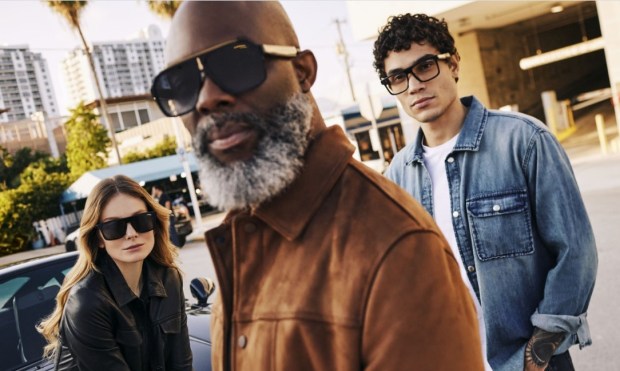Amazon’s Bid to Get Smart Glasses Right

Smart glasses have long been the stuff of science fiction dreams, promising a future where we can seamlessly integrate digital information and augmented reality into our daily lives. However, despite numerous attempts by tech giants and startups, smart glasses have consistently failed to take off in the consumer market. This lackluster reception can be attributed to several missing elements that have hindered their adoption.
Amazon introduced its own version of smart glasses called Echo Frames last week. These glasses are designed to seamlessly integrate with Alexa, aligning with the company’s vision of on-the-go ambient technology. This technology enables customers to stay connected while effortlessly blending into their lifestyle when not actively in use. Will it have the power to do what others have failed to do? Gain consumer adoption?
What Smart Glasses Lack
One of the primary reasons for the failure of smart glasses has been their less-than-fashionable appearance. Early models were often bulky and unwieldy, making wearers feel self-conscious and awkward. Consumers are unwilling to sacrifice their sense of style for the sake of technological innovation. While some progress has been made in making smart glasses more aesthetically pleasing, they still have a long way to go to match the appeal of traditional eyewear.
In September 2021, Ray-Ban, in collaboration with Facebook (now Meta Platforms), unveiled Ray-Ban Stories — a pair of smart glasses designed to combine fashion and technology. Despite the reputation and style associated with Ray-Ban, these smart glasses encountered several challenges.
Ray-Ban Stories made strides in terms of aesthetics, blending technology into a classic eyewear design. However, some users still found them bulkier than traditional glasses, with a conspicuous camera placement.
While Ray-Ban Stories allowed wearers to take photos and record videos, similar to what a smartphone could do, it lacked the compelling, unique use cases that would make it indispensable. Consumers struggled to justify the purchase beyond novelty.
Furthermore, given the built-in camera, Ray-Ban Stories faced privacy issues similar to those plaguing earlier smart glasses. People were wary of being recorded without their knowledge or consent.
These smart glasses also came with a premium price tag, making them less accessible to a wider audience.
Read more: Amazon Unveils Upgraded Devices With Gen AI-Powered Features
Snap made its debut in 2016 with the first generation of Snapchat Spectacles, followed by subsequent versions, all with the goal of capitalizing on Snapchat’s popularity. Nevertheless, they encountered their own unique set of hurdles, primarily related to the fact that Snapchat Spectacles featured a fun and youthful design that, while distinctive, didn’t align with everyone’s fashion preferences. The distinctive circular camera housing was particularly conspicuous.
Both Ray-Ban Stories and Snapchat Spectacles showcased the difficulties in bridging the gap between fashion and technology while providing unique and indispensable features. Despite the backing of renowned brands and social media giants, these smart glasses did not manage to overcome the challenges of aesthetics, limited use cases, privacy concerns, and user interface difficulties, underscoring the ongoing struggle to achieve widespread consumer adoption in the smart glasses market.
Amazon’s Bid to Get Smart Glasses Right
“When it came to developing the new generation of Echo Frames, we worked backwards from what customers wanted — putting an emphasis on aesthetics and making the technical improvements they requested,” said Amazon staff in a blog post, noting that the improvements stemmed from the company’s early generations of glasses.
The outcome consists of smart glasses equipped with Alexa, now offered in the next-generation Echo Frames and fresh designs from Carrera. This represents a fusion of upscale fashion and Alexa artificial intelligence (AI) within Amazon’s product portfolio. The lineup consists of seven style choices, with Carrera Eyewear from Safilo Group contributing two designs: Modern Rectangle, Rectangle, Round, Square, Cat Eye, Carrera Cruiser, and Carrera Sprinter.
The smart glasses also offer a variety of lens choices, including sunglasses lenses equipped with UV400 protection, prescription-ready options, and blue light lenses. These glasses also boast IPX4 water resistance and resistance to scratches.
With a fully charged battery, these smart glasses offer up to six hours of media playback, a 40% enhancement in continuous audio playback and a 80% increase in continuous talk time when compared to the previous generation.
Furthermore, these smart glasses are loaded with user-friendly functionalities, such as initiating a playlist with a double-press of a button and supporting multipoint pairing.
“Choosing the right eyewear is about so much more than just finding a pair of glasses to help with vision correction — it’s a reflection of your unique personality and style,” said Jean Wang, director of smart eyewear at Amazon.
Both Echo Frames and Carrera Smart Glasses have been crafted to safeguard personal information, as users have the option to mute the microphones with a double-press of a button, and they retain control over their voice recordings, with the ability to view, listen to, or delete them.
The Echo Frames are available at a starting price of $269.99, while the Carrera Smart Glasses with Alexa are priced at $389.99.
